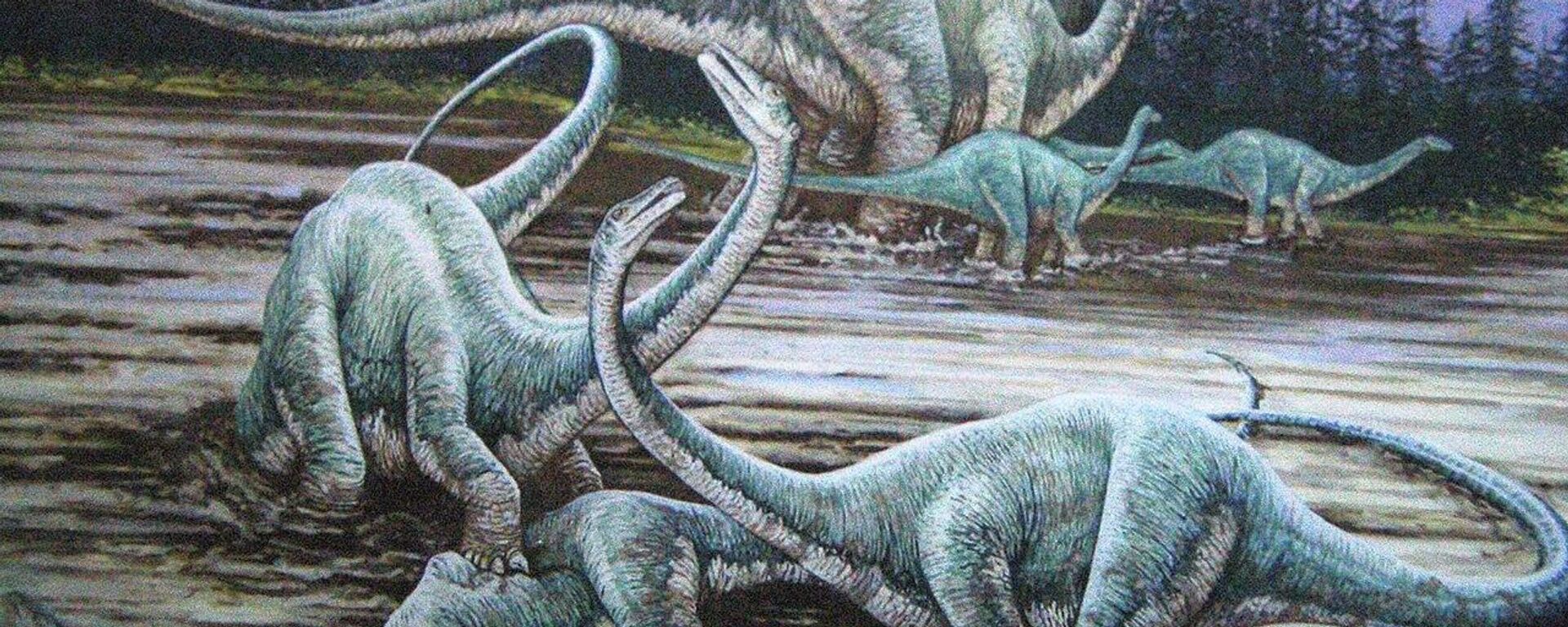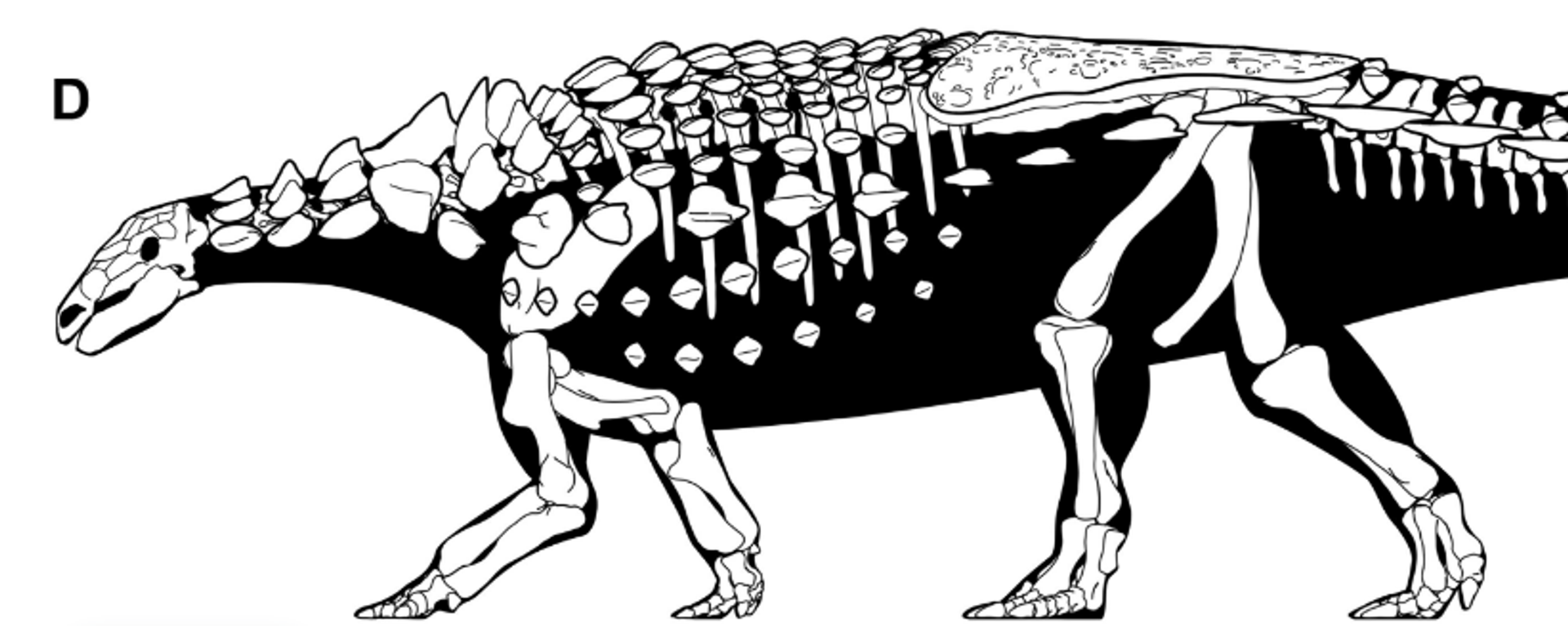https://sputnikglobe.com/20230718/new-evidence-shows-ancient-mammal-preyed-on-dinosaurs-scientists-say-1111977179.html
New Evidence Shows Ancient Mammal Preyed on Dinosaurs, Scientists Say
New Evidence Shows Ancient Mammal Preyed on Dinosaurs, Scientists Say
Sputnik International
This fossil provides new insights into the coexistence of these two species and sheds light on the predatory behavior exhibited by mammals during Cretaceous period.
2023-07-18T21:20+0000
2023-07-18T21:20+0000
2023-07-18T21:17+0000
beyond politics
science & tech
dinosaurs
dinosaur
paleontology
paleontology
cretaceous period
https://cdn1.img.sputnikglobe.com/img/07e7/07/12/1111976876_0:42:701:436_1920x0_80_0_0_1aecc911f96af92c97b7156e58f7d275.jpg
New findings in the world of paleontology reveal an unexpected predator that once roamed during the Cretaceous period and took on much bigger dinosaurs. The fossilized remains of a Psittacosaurus lujiatunensis, a dinosaur, were discovered in a surprising position—its ribs were locked within the jaws of a much smaller Repenomamus robustus, an opossum-like mammal. While it was previously known that R. robustus fed on smaller prey, this is the first evidence of such a mammal attacking a larger dinosaur.This fossil provides new insights into the coexistence of these two species and sheds light on the predatory behavior exhibited by mammals during that era.The Psittacosaurus genus existed approximately 125 to 101 million years ago and was widely distributed across modern-day Asia, Russia, Mongolia and Thailand. These dinosaurs had parrot-like beaks, walked on their hind legs, had clawed forelimbs, and reached lengths of up to 2 meters (6.6 feet).Repenomamus robustus, the smaller of two known Repenomamus species during the early Cretaceous, was among the largest mammals of its time, even though it was still dwarfed by the dinosaurs. It is important to note that during this period, mammals were relatively scarce compared to dinosaurs.Initial observations of the fossil within volcanic rock might have suggested the mammal was merely scavenging. However, further examination by a team led by paleontologist Gang Han, of the Hainan Vocational University of Science and Technology in China, revealed the bones of the Psittacosaurus were undisturbed, with no scavenger marks.The entangled position of the two creatures indicated this was not a scavenging event. Additionally, the mammal was found on top, suggesting an active attack rather than a passive scavenging attempt.While smaller animals taking down larger prey is observed in modern times, such behavior during the Cretaceous period is remarkable. Wolverines are known to hunt caribou, which are more than 10 times' their size, while honey badgers take on oryx, demonstrating similar size disparities.The findings of the study were published in Scientific Reports journal.
https://sputnikglobe.com/20230703/bird-like-air-spaces-in-dinosaurs-bones-key-to-their-gigantic-size-1111641433.html
https://sputnikglobe.com/20230617/new-dinosaur-species-that-once-sported-spiked-armor-discovered-on-isle-of-wight-1111235744.html
Sputnik International
feedback@sputniknews.com
+74956456601
MIA „Rosiya Segodnya“
2023
News
en_EN
Sputnik International
feedback@sputniknews.com
+74956456601
MIA „Rosiya Segodnya“
Sputnik International
feedback@sputniknews.com
+74956456601
MIA „Rosiya Segodnya“
cretaceous period, ancient mammals, psittacosaurus lujiatunensis, paleobiologist jordan mallon, did mammals and dinosaurs coexist, paleontologist gang han
cretaceous period, ancient mammals, psittacosaurus lujiatunensis, paleobiologist jordan mallon, did mammals and dinosaurs coexist, paleontologist gang han
New Evidence Shows Ancient Mammal Preyed on Dinosaurs, Scientists Say
The fossilized remains of dinosaurs provide valuable insights into the past, allowing researchers to piece together the story of these ancient creatures and their interactions millions of years ago.
New findings in the world of paleontology reveal an unexpected predator that once roamed during the Cretaceous period and took on much bigger dinosaurs.
The fossilized remains of a Psittacosaurus lujiatunensis, a dinosaur, were discovered in a surprising position—its ribs were locked within the jaws of a much smaller Repenomamus robustus, an opossum-like mammal. While it was previously known that R. robustus fed on smaller prey, this is the first evidence of such a mammal attacking a larger dinosaur.
"The two animals are locked in mortal combat, intimately intertwined, and it's among the first evidence to show actual predatory behavior by a mammal on a dinosaur," stated paleobiologist Jordan Mallon, of the Canadian Museum of Nature.
This fossil provides new insights into the coexistence of these two species and sheds light on the predatory behavior exhibited by mammals during that era.
The Psittacosaurus genus existed approximately 125 to 101 million years ago and was widely distributed across modern-day Asia, Russia, Mongolia and Thailand. These dinosaurs had parrot-like beaks, walked on their hind legs, had clawed forelimbs, and reached lengths of up to 2 meters (6.6 feet).
Repenomamus robustus, the smaller of two known Repenomamus species during the early Cretaceous, was among the largest mammals of its time, even though it was still dwarfed by the dinosaurs.
It is important to note that during this period, mammals were relatively scarce compared to dinosaurs.
Initial observations of the fossil within volcanic rock might have suggested the mammal was merely scavenging. However, further examination by a team led by paleontologist Gang Han, of the Hainan Vocational University of Science and Technology in China, revealed the bones of the Psittacosaurus were undisturbed, with no scavenger marks.
The entangled position of the two creatures indicated this was not a scavenging event. Additionally, the mammal was found on top, suggesting an active attack rather than a passive scavenging attempt.
"This might be the case of what's depicted in the fossil, with the Repenomamus actually eating the Psittacosaurus while it was still alive – before both were killed in the roily aftermath," said Mallon.
While smaller animals taking down larger prey is observed in modern times, such behavior during the Cretaceous period is remarkable. Wolverines are known to hunt caribou, which are more than 10 times' their size, while honey badgers take on oryx, demonstrating similar size disparities.
The findings of the study were published in
Scientific Reports journal.






